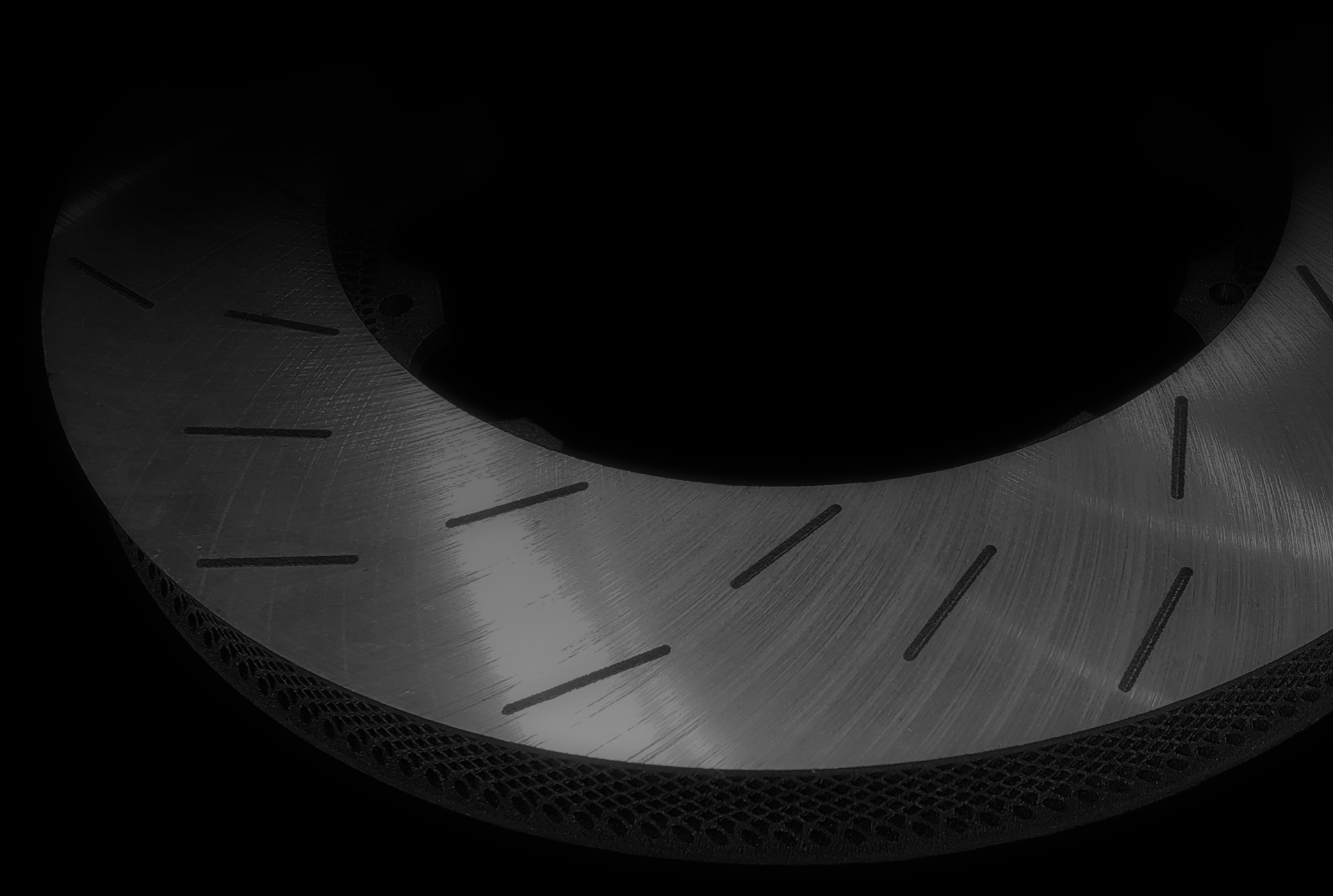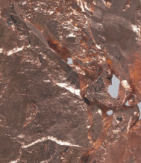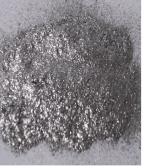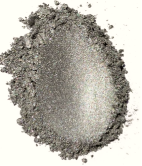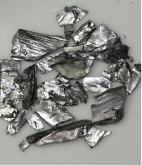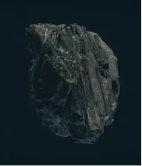
Elementum 3D helps advance rocket propulsion applications
Elementum 3D is honored to align with the Rapid Analysis and Manufacturing Propulsion Technology (RAMPT) project, a public-private partnership led by NASA. The project’s goal is to use additive manufacturing (AM) methods including directed energy deposition (DED) to produce stronger and lighter rocket parts and fully understand the microstructure and properties of metal matrix composite (MMC) materials.
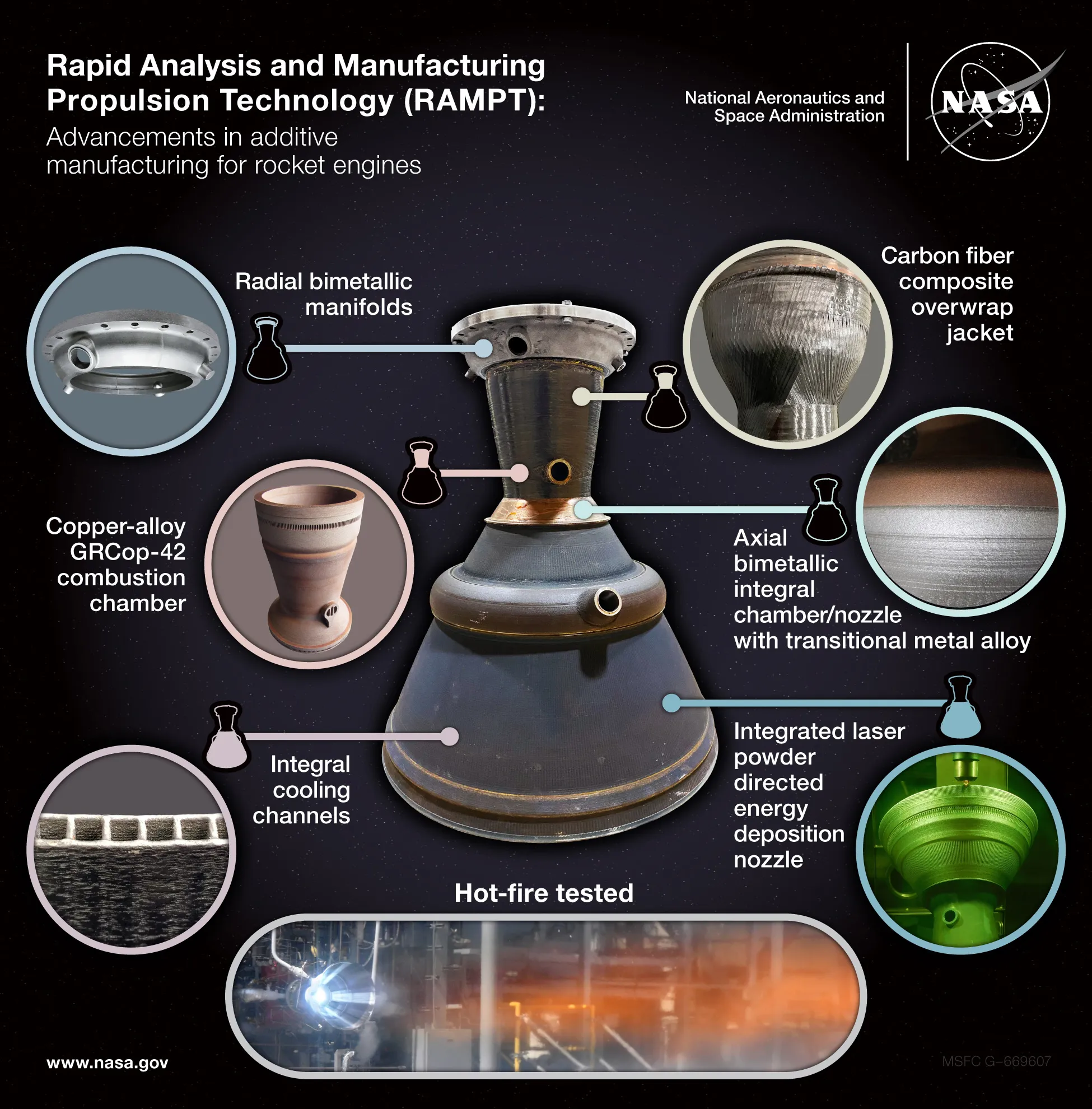
Elementum 3D contributed to the RAMPT project in multiple ways. The NASA ACO RAMFIRE program extended developments from the RAMPT project. The RAMFIRE program focused on transitioning complex rocket components and launch structures from Nickel (Ni) and iron (Fe)-based superalloys to a new aluminum alloy (A6061-RAM2) and printing them in a large-scale blown powder DED print process.
A NASA Phase III contract, awarded to Elementum 3D in 2019, printed many of the 7K and 40K L-PBF GRCop-42 chambers that were part of the RAMPT project. The scope of the effort included developing a large format AM process to optimize print quality, reliability, speed, and property characterization of GRCop-42 rocket propulsion components.
Elementum 3D’s CTO, Dr. Jeremy Iten, participated as a chapter co-author of the Metal Additive Manufacturing for Propulsion Applications book and Elementum 3D produced some test specimens for NASA’s data collection under the RAMPT initiatives. Lead Editor Paul Gradl has stated, “Our goal with this book is provide practical lessons in successes and failures for metal AM and a basic understanding of the entire process from concept and selection through certification. AM does not stop or start at the build process alone and there is so much to understand beyond the build to apply successfully. We hope with this book AM can be applied both intentionally and methodically.”
NASA’s RAMPT project is propelling rocket propulsion manufacturing into a new era. It is already enabling engineers to print intricate assemblies of components as single pieces, dramatically reduce manufacturing times, improve component performance and reliability, and apply these advances across the space industry.
NASA reported that the RAMPT project has achieved significant milestones utilizing new alloys and large-scale additive manufacturing processes, including 500 test-firings of 3D-printed injectors, nozzles, and chamber hardware totaling more than 16,000 seconds and 12 hot-fire tests with 3D printed thrust chamber hardware. The efforts also demonstrated a 40% weight savings using composite materials. Finally, NASA noted as a key achievement the development of a full-scale version of the RS-25 engine with the potential to reduce costs by up to 70% and cut manufacturing time in half.

- NASA updates on progress of RAMPT program to advance DED
- Formnext 2024: A focus on industrial 3D printing applications and other services
- SpaceX simplifies Raptor engine: Has it used additive manufacturing?
- America Makes award recipients demonstrate ‘resilience of the AM community’
- Finding the balance when automating additive manufacturing
- Riding into a 3D future with BMW
- The Journey and Future of Additive Manufacturing at Daimler Truck | Daimler Buses
- Fonon Additive Manufacturing: Bringing High-Tech to Rail Transport Industry
- 3D printing improves the efficiency of thermoelectric materials
- Daring AM: New Frontiers in 3D Printing Shaping NASA’s Space Future
- MMX 2024: RMAG, CORE, IMPACT Updates & More
- Video – Additive manufacturing applications in aerospace explode
- Video – How additive manufacturing is impacting the automotive industry
- Bringing additive manufacturing into focus at Nikon
- Get hip to HIP: Bringing high pressure to 3D printed parts
- Interspectral secures investment to drive AI-powered quality assurance for additive manufacturing


